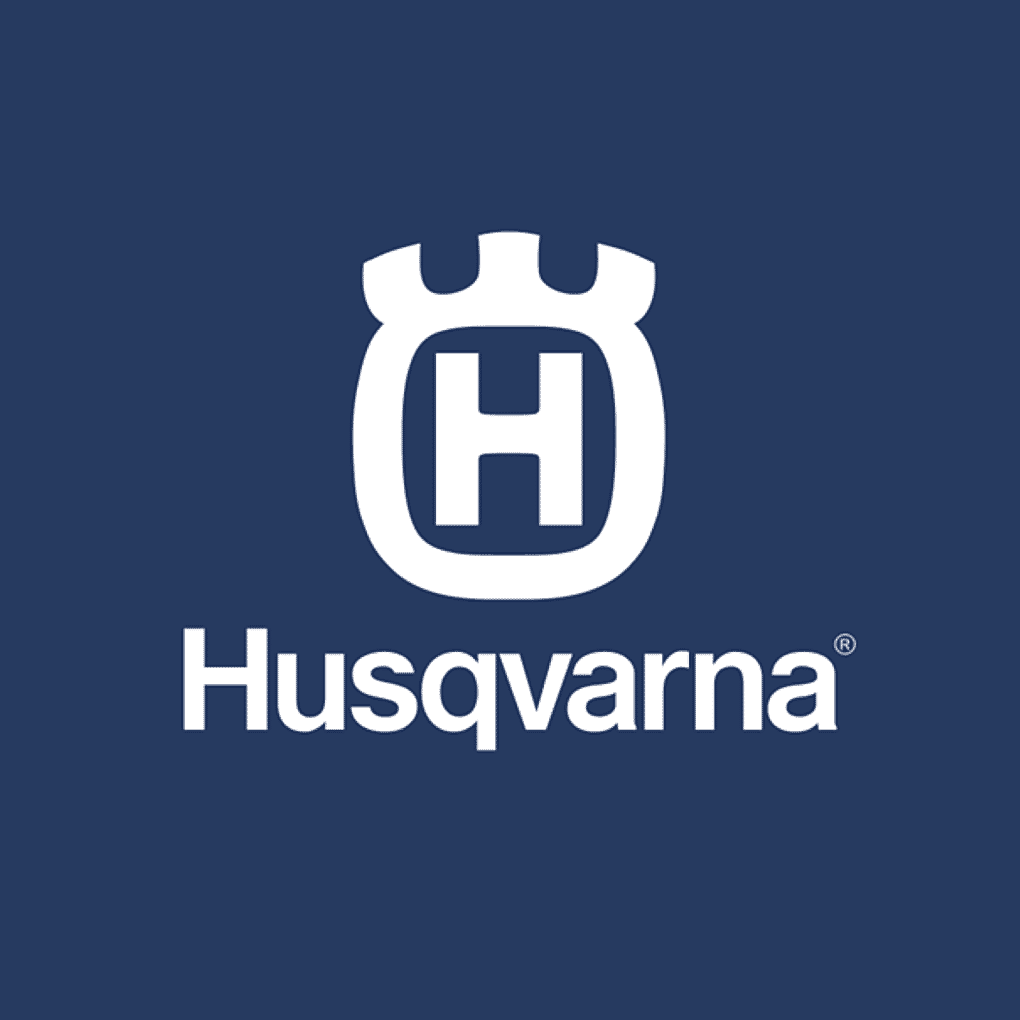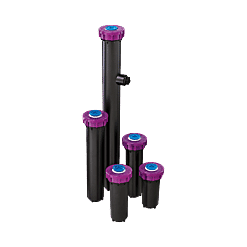HRX 075 4″ Non-potable Rotor with Adjustable Arc
$16.68MSRP
In stock
Husqvarna’s top-performing rotary sprinkler for lawn and garden areas is now available for Non-potable or reclaimed water applications.
Through its broad selection of precision nozzles, the HRX provides industry-leading distribution uniformity for any landscape. Putting water where you need it – that’s the engineering development mission behind the manufacturing of Husqvarnas HRX Series Rotors.
FEATURES AND BENEFITS
- Uniform coverage with matched precipitation across nozzles #1 through #4 and low angle nozzles
- Easy-to-match precipitation nozzle system. Use nozzle #1 for 90°, #2 for 180°, #3 for 270°, and #4 for 360°
- Rubber cover keeps the dirt out of adjustment components
- Lubricated gear assembly provides years of reliable use
- The precision reversing mechanism enables smooth non-delayed forward and reverse rotation
- Adjustment key changes arc from 40-360 degrees
- Radius can be adjusted from 100-25%
| Weight | 9.6 lbs |
|---|---|
| Dimensions | 3 × 3 × 7.5 in |
| Precipitation Rate | 0.10 to 1.03 inches per hour |
| Radius | 52 Feet |
| Arc or Pattern | Adjustable |
| Arc Adjustment Range | 40 to 360 Degrees |
| Operating pressure | 65 PSI |
| Operating Pressure Range | 30 – 70 PSI |
| Burst pressure | 140 PSI |
| Flow Rate | 0.3 – 9.6 GPM |
| Inlet | 3/4" Female NPT |
| Connection Type | Female National Pipe thread |
| Material | UV-resistant ABS |
| Pop-up Height | 4 inches |
| Factory Installed Nozzle | #2 |
| Nozzles Included | 10 – 5 Low Angle and 5 Standard Angle |
Precipitation Rate Tables
Precipitation rates based on half-circle operation- Square spacing based on 50% diameter of throw
- Triangular spacing based on 50% diameter of throw
Performance data collected in zero wind conditions
Performance data derived from tests that conform with ASABE Standards; ASABE S398.1
| Nozzle | Pressure Pounds Per Square Inch | Radius Feet | Flow Gallons Per Minute | Precipitation Rate Inches per Hour Square Spacing | Precipitation Rate Inches per hour Triangular Spacing |
|---|---|---|---|---|---|
| 1 | 25 | 27 | 0.8 | 0.21 | 0.24 |
| 1 | 35 | 28 | 0.9 | 0.23 | 0.56 |
| 1 | 45 | 28 | 1.1 | 0.25 | 0.29 |
| 1 | 55 | 29 | 1.2 | 0.26 | 0.31 |
| 1 | 65 | 30 | 1.3 | 0.27 | 0.32 |
| 2 | 25 | 32 | 1.7 | 0.32 | 0.37 |
| 2 | 35 | 36 | 1.9 | 0.29 | 0.34 |
| 2 | 45 | 37 | 2.2 | 0.31 | 0.36 |
| 2 | 55 | 37 | 2.4 | 0.34 | 0.39 |
| 2 | 65 | 38 | 2.6 | 0.36 | 0.41 |
| 3 | 25 | 31 | 2.1 | 0.42 | 0.49 |
| 3 | 35 | 36 | 2.7 | 0.40 | 0.46 |
| 3 | 45 | 39 | 3.1 | 0.40 | 0.46 |
| 3 | 55 | 40 | 3.4 | 0.40 | 0.47 |
| 3 | 65 | 43 | 3.7 | 0.39 | 0.45 |
| 4 | 25 | 35 | 2.8 | 0.44 | 0.51 |
| 4 | 35 | 39 | 3.9 | 0.49 | 0.57 |
| 4 | 45 | 42 | 4.5 | 0.49 | 0.56 |
| 4 | 55 | 43 | 5 | 0.52 | 0.60 |
| 4 | 65 | 44 | 5.4 | 0.54 | 0.62 |
| 8 | 25 | 41 | 6 | 0.71 | 0.82 |
| 8 | 35 | 47 | 7.3 | 0.63 | 0.73 |
| 8 | 45 | 48 | 7.3 | 0.61 | 0.71 |
| 8 | 55 | 52 | 7.6 | 0.54 | 0.63 |
| 8 | 65 | 57 | 8 | 0.47 | 0.55 |
| L0.5 | 25 | 25 | .9 | 0.29 | 0.33 |
| L0.5 | 35 | 26 | .9 | 0.25 | 0.29 |
| L0.5 | 45 | 27 | 1 | 0.26 | 0.31 |
| L0.5 | 55 | 28 | 1.2 | 0.28 | 0.33 |
| L0.5 | 65 | 29 | 1.3 | 0.30 | 0.34 |
| L1 | 25 | 27 | 1 | 0.30 | 0.35 |
| L1 | 35 | 30 | 1.3 | 0.29 | 0.33 |
| L1 | 45 | 27 | 1 | 0.26 | 0.31 |
| L1 | 55 | 28 | 1.2 | 0.28 | 0.33 |
| L1 | 65 | 29 | 1.3 | 0.30 | 0.34 |
| L1.5 | 25 | 26 | 1 | 0.40 | 0.46 |
| L1.5 | 35 | 28 | 1.6 | 0.39 | 0.45 |
| L1.5 | 45 | 31 | 1.8 | 0.37 | 0.43 |
| L1.5 | 55 | 33 | 2. | 0.36 | 0.42 |
| L1.5 | 65 | 34 | 2.2 | 0.38 | 0.44 |
| L2 | 25 | 26 | 2 | 0.52 | 0.60 |
| L2 | 35 | 29 | 2.1 | 0.49 | 0.56 |
| L2 | 45 | 31 | 2.4 | 0.47 | 0.54 |
| L2 | 55 | 33 | 2.7 | 0.47 | 0.54 |
| L2 | 65 | 35 | 2.9 | 0.47 | 0.54 |
| L3 | 25 | 33 | 3 | 0.49 | 0.56 |
| L3 | 35 | 36 | 3.2 | 0.48 | 0.56 |
| L3 | 45 | 39 | 3.7 | 0.47 | 0.55 |
| L3 | 55 | 41 | 4.1 | 0.47 | 0.54 |
| L3 | 65 | 43 | 4.5 | 0.48 | 0.55 |
What does Non-potable mean?
Non-potable water is water that is not safe for drinking or cooking. Non-potable water sources include greywater, freshwater, groundwater, and stagnant bodies of water. Some of these can be filtered in order for the water to be reused, and some not.
Basics of Water Reuse
Water reuse (also commonly known as water recycling or water reclamation) reclaims water from a variety of sources then treats and reuses it for beneficial purposes such as agriculture and irrigation, potable water supplies, groundwater replenishment, industrial processes, and environmental restoration. Water reuse can provide alternatives to existing water supplies and be used to enhance water security, sustainability, and resilience.
Types of Water Reuse
Sources of water for potential reuse can include municipal wastewater, industrial process, and cooling water, stormwater, agriculture runoff, and return flows and produced water from natural resource extraction activities. These sources of water are adequately treated to meet “fit-for-purpose specifications” for a particular next use. “Fit-for-purpose specifications” are the treatment requirements to bring water from a particular source to the quality needed, to ensure public health, environmental protection, or specific user needs. For example, reclaimed water for crop irrigation would need to be of sufficient quality to prevent harm to plants and soils, maintain food safety, and protect the health of farmworkers. In uses where there is greater human exposure water may require more treatment.
For more information, you can visit the US EPA site on water reuse.


.spin?thumb&w=247&h=247&scale.option=fill&cw=247&ch=247&cx=center&cy=center&profile=Hydro-Rain%20Images)
